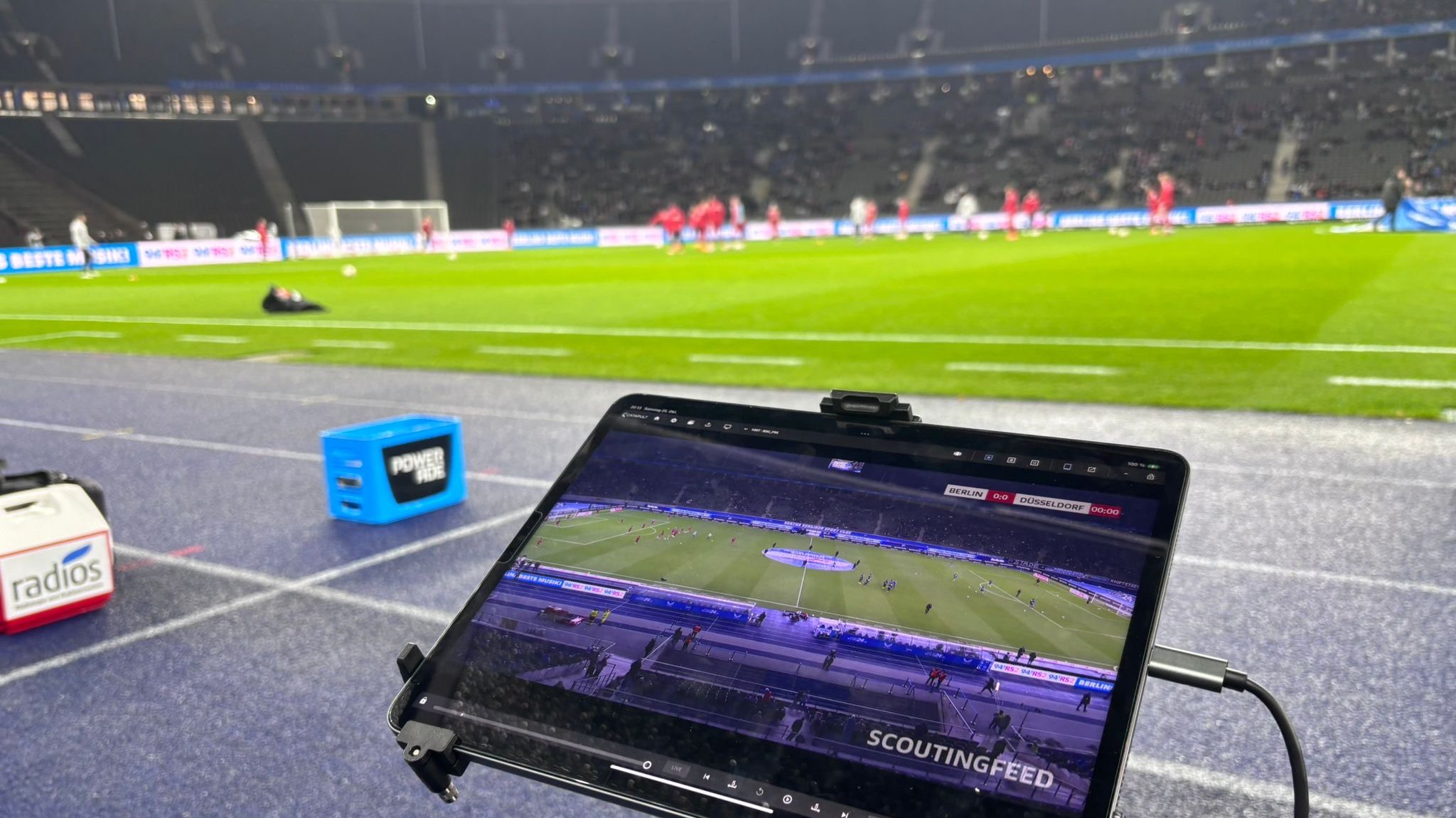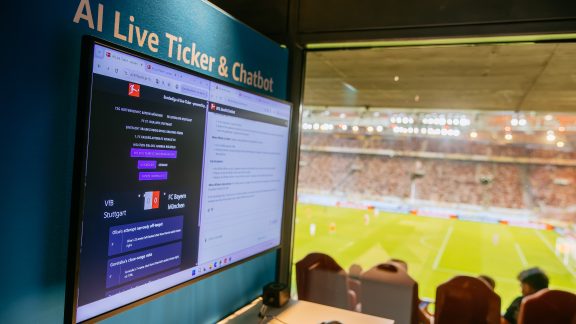Live video transmission for match analysts: The new Match Analysis Stream

28 October 2025 – A new DFL service has been made available to match analysts at Bundesliga and Bundesliga 2 clubs since Matchday One of the 2025-26 season that makes their jobs significantly easier. Developed by the DFL joint venture Sportec Solutions AG (STS), the service delivers the video streams of five key camera perspectives used for match analytics to remote locations outside stadiums.
Flexible live video access from nearly anywhere
Until recently, the clubs’ match analysts had to attend the games in person to follow and evaluate the action from the vantage points required for their purposes. The relevant camera signals can be received at dedicated network connection points located on the grandstand, in the dressing room and at the dugout. But now analysts can access the same video streams directly from any place with suitable internet access. This is made possible by the Amazon Web Services Cloud, hosted at the AWS data centre in Frankfurt.
As a consequence, analysts are no longer required to travel to far-away stadiums but are free to work from their preferred location. This new flexibility can save time and travelling costs, especially during away games, while at the same time reducing carbon emissions.

The five camera signals include the following perspectives: The Main Camera captures the basic TV image seen on-screen most of the time; the Programme Camera is used for special angles as well as replays, slow-motion etc. The Scouting Feed Camera always covers all 20 field players in full-field view, whereas the cameras behind the goals transmit the goalkeepers’ views. Each club can use up to five endpoints per camera stream of its own games; in other words, each camera signal can be received by up to five individual devices on the club end. In addition, every club has an extra endpoint for each additional league match. “This option didn’t exist locally in the past, even at the stadiums,” says Bastian Vogt, Project Manager – Technology and Innovation at DFL GmbH. “Now coaches and analysts can use this extra signal to study the playing style of the next matchday’s opponents, for example.”
Resilient transport protocol with minimum latency
“The signal transmission uses the SRT, or Secure Reliable Transport protocol, which is very robust in handling transmission errors and has low latency,” explains Dr. Marius Pokolm, Project Manager – Performance Solutions at STS. The SRT protocol is designed to transmit video streams reliably across unreliable networks such as the Internet. “Latency, which is the time it takes a data packet to be transmitted from the camera to the viewer’s display, depends on external factors, such as the quality of the end user’s Internet connection,” Pokolm points out. “In most cases we achieve a latency between one and two seconds.”
Uncompressed video signals require very high bandwidths, which can be reduced by compressing the video stream using advanced video codecs, says Pokolm: “The HEVC codec delivers higher quality at low bandwidths.”
Convenient selection of the video stream and transmission path

The full videos of all five streams are available for export within 15 minutes of the final whistle. Users have three options to access their streams: Apart from the Match Analysis Hub, which has been in use for several years, a new export website has been created where users can select either the entire match or specific portions of it for downloading. The third option is an application programming interface (API) for downloading the video material directly to the club’s analytics software application. “We may also grant the developers of common analytics software products direct access to the API so they can integrate it in their solutions, which could then access and receive video streams seamlessly,” says Pokolm.
Integrated streams create new opportunities
“Our new approach simplifies video delivery, improves scalability, and creates new possibilities to link video streams with information from other systems,” says Bastian Vogt, adding: “The DFL has built significant expertise in this field over time. This also benefits the clubs we serve.” The technical infrastructure established for the Match Analysis Stream could become the foundation for video delivery in other use cases. Additional camera perspectives could be incorporated, enabling the Match Analysis Stream to provide substantial value-add to a range of applications beyond match analytics.

